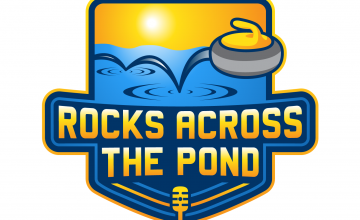by Jonathan Havercroft
In the first blog post in this series I introduced definitions of strategy and tactics and said that most teams focus on tactics and neglect strategy entirely. Today I want to expand on some basic strategy concepts by defining what I mean by offense, defense, and probing strategies.
In many team sports – think American football, real football (that’s soccer Ryan), baseball, basketball, and hockey – it is obvious which team is on offense and which team is on defense. The team on offense possesses the ball or puck or is at bat and is trying to score. The team on defense is trying to stop the other team from scoring. In case you are confused, the fans usually help out by chanting DE-FENSE!
One of the ways curling is different is possession does not dictate who is on offense and who is on defense – strategy does. It is also possible in curling for both teams to be on offense at the same time, and it is possible for both teams to be on defense at the same time. So how do we tell who is attacking in curling and who is defending?
A simple rule of thumb is by looking at how you respond to your opponent’s stone. Somebody once told me that there are only three things you can do to your opponent’s stone – you can eliminate it (think take-out), you can use it (think freeze or come around draw) or you can ignore it (think guard).
Each of those options points to a strategic stance. If you ignore your opponent’s stone, then you are trying to generate a scoring opportunity for yourself on a different area of the ice. This is what I mean by offense.
If you use your opponent’s stone, you are trying to counteract their shot by positioning your stone in a better spot. This is what I mean by probing.
If you eliminate your opponent’s stone, then you are trying to stop your opponent from scoring. This is what I mean by defense.
I spoke last time about team plans, game plans and end plans. When a team identifies its team strategy they should decide if they are an offense-first team, a defense-first team or a probing team.
An offense-first team will play more draws than hits and will be comfortable with lots of stones in play. They also need to be comfortable with giving up big ends because an offense-first strategy leads to more scoring for both sides.
A defense-first team will play more hits than draws and will be comfortable with few rocks in play. They also need to be patient and comfortable grinding out close games, because a defense-first approach minimizes the scoring opportunities for both teams.
A probing team will try to use their opponents stones to generate scoring opportunities, but they will also bail on an end quickly if the situation begins to look disadvantageous. They play opportunity curling, looking for chances to take advantage of an opponent’s mistake, but also looking to minimize the opportunities they generate for their opponent. Probing teams have to know when to switch from offense to defense, and how to recognize opportunities.
My advice to club-level teams – especially teams just starting out developing their team strategy – is to develop either an offensive-first or defensive- first strategy and then try to develop a probing strategy later on. There are a few reasons for this.
Offense-first approaches and defense-first approaches are fairly simple to learn. At their extremes they can mean either “hit all the opponent’s stones” or “keep drawing to the button no matter what.” At the club level, both of those strategies can be devastatingly effective. I would actually encourage your team to try either of those strategies for an entire game or two and see what the results are.
Once your team is comfortable playing offense and defense, then you can begin to add probing to your approach. Basic probing strategy involves attacking your opponent until a predetermined bail point in the end and then either deciding to continue to attack or changing your strategy to defense.
For example, at the start of an end you could agree with your team to probe until the 5th stone of the end (when the free guard zone ends) and then assess the situation. If your team is in a favourable position (e.g. you are sitting shot rock behind a guard) then you will keep attacking, But if you are in an unfavourable position then you will switch to defense.
I said last time that most curling teams are all tactics and no strategy – by which I mean they focus narrowly on selecting a specific shot rather than thinking about how their shots fit into an overall plan. The advantage of deciding to be offense-first, defense-first or probing is that the strategy dictates what shots you should select.
The tricky part is sticking to the plan. But I do believe that if you as a team agree to a plan before each game and before each end and stick to that plan, you will do better than if you fall back into the tactics-first approach.
Do I guarantee that you will win every game? No, because at the end of the day shot execution matters the most. But if you develop a plan, then decide your shots according to that plan and then adjust the plan after each game, you will put in place a process that will make shot selection quicker, and eventually match your shot strategy with your team’s skill set.
Your homework is to meet with your team and decide whether you want to try an offense-first (mostly draws) or defense-first (mostly hits) approach to strategy and then use that game plan in the next game no matter what. Then discuss with you team after the game what you learned.
